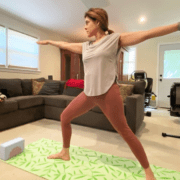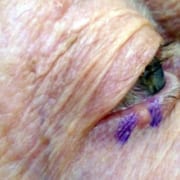There are many myths surrounding the causes and treatment of acne. Let’s look at what’s actually true.
Your diet has nothing to do with your acne.
FALSE. There is increasing scientific evidence to support a relationship between acne and diet. Specifically, foods that are highly processed, such as chips, crackers, and cakes, along with “high glycemic foods”, such as white bread, soda, candy, and juice, should be avoided in patients prone to acne.
In addition, certain dairy products may also exacerbate acne-prone skin. A recent study published in The Journal of the American Academy of Dermatology demonstrated that consumption of skim and low-fat milk—but not full-fat milk—was positively associated with worsening acne.
Acne-fighting diets should have plenty of anti-inflammatory foods, including fruits, vegetables, whole grains, legumes, fatty fish, and nuts. Of course, diet alone cannot completely eradicate acne, and should be combined with proven medical treatments to ensure clear skin.
Tanning improves acne.
MAYBE TRUE. While the sun’s rays can temporarily clear up acne, tanning is NOT recommended due to the harmful effects of UV rays on the skin.
However, certain light treatments available at home and in the dermatologist’s office can work to effectively treat acne without the risk of UV damage. Studies have shown that the colonization of the P. acnes bacteria that contributes to acne is reduced when exposed to concentrated amounts of blue or red light. This type of treatment, termed photodynamic therapy (PDT), may also reduce the need for oral medications, like antibiotics, which can lead to unwanted side effects. A typical PDT course consists of 8 weekly treatments. For more severe acne, a topical medication called aminolevulinc acid HCl may be applied prior to sitting in front of the light and can reduce the amount of treatments required to achieve acne clearance.
Acne only affects individuals in their teenage years.
FALSE. Most patients think they will grow out of acne as an adult, yet adult acne—defined as acne over the age of 25—is a common concern encountered by dermatologists. Adult-onset acne is particularly common in females, due to the fluctuation of hormone levels around the menstrual cycle, during pregnancy, perimenopause, and after discontinuing oral contraceptive pills. This type of acne may require specific medications to treat effectively, thus it is best managed by your dermatologist.
Vigorous cleansing will improve acne.
FALSE. In individuals with acne-prone skin, it is important to cleanse the skin twice daily to remove dirt and oils. However, over-cleansing the skin with harsh ingredients can actually trigger more inflammation, making acne worse. A gentle cleanser is best, along with ingredients such as fragrance-free moisturizers, that are not irritating to the skin. While it may seem counterintuitive in patients with oily skin, moisturizers are actually an important part of an acne treatment regimen, as they allow the skin to better tolerate topical acne medications.
Furthermore, when the skin becomes too dry, the body reacts by making more oil, which can clog the pores and lead to more breakouts. Balancing the skin’s natural barrier through gentle cleansing and noncomedogenic moisturizers is best to keep acne to a minimum.
Acne is caused by bacteria.
MAYBE TRUE. Most individuals believe acne is caused by an overgrowth of bacteria, but that is only one component of the pathophysiology of acne. Other causes of acne include inflammation, hormonal factors, and genetic susceptibility, all of which need to be treated in different ways. This is why multiple medications are often used to treat acne, and an acne treatment plan needs to be tailored to each individual.
Acne is not a serious health problem.
FALSE. Traditionally, acne has been thought of as purely cosmetic and not a serious health concern, however, studies have shown that acne can take a toll on patients’ mental health.
Research has revealed that acne can lead to depression, anxiety, and low self-esteem. Furthermore, stress has been shown to worsen acne, leading health professionals to struggle with determining whether a patient’s acne is causing his or her mental health problem or vice versa.
Our bodies respond to stress by producing more hormones (androgens), which can stimulate the oil glands and hair follicles in the skin, leading to more acne. Thus, for acne treatment to be effective, limiting stress and addressing the mental health of the patient is an important part of the treatment plan.
I can clear up acne using at-home treatments.
TRUE, but in-office treatments may be more effective. There are many effective over-the-counter products that can be used to treat acne, such as benzoyl peroxide, salicylic acid, and synthetic retinoids, like adapalene. However, if your acne has not cleared up with these treatments, it may be time to see your dermatologist.
A dermatologist can help tailor your treatment plan to your individual skin type and target specific causes of your acne. In addition, many in-office procedures have been shown to be very effective for managing acne. Chemical peels with ingredients like salicylic acid and retinol, help to reduce the number of new acne lesions as well as clear up the annoying post inflammatory redness acne leaves behind. These treatments are typically not covered by insurance and costs may vary.
Your hair has nothing to do with acne.
FALSE. Seborrheic dermatitis, or dandruff, is a skin condition that commonly overlaps with acne. It typically affects the areas of the body that are rich in oil glands, such as the face, scalp, chest, and back.
Symptoms include greasy scale along the forehead and around the nose, with scaling and itching of the scalp. Treating the hair with medicated shampoos containing ketoconazole, zinc, or sulfur several times a week can help improve the seborrheic dermatitis as well as clear up acne, and are also often an important part of the acne treatment plan.
Sunscreen can worsen acne due to clogged pores.
MAYBE TRUE. Certain chemical sunscreens can irritate the skin and worsen acne in susceptible individuals. However, physical sunscreens, such as those containing zinc oxide, can actually help acne due to their anti-inflammatory effects.
In addition, many sunscreens have other beneficial ingredients that have been shown to improve acne. For example, Elta MD UV clear sunscreen contains niacinamide and lactic acid, two acne-fighting ingredients that keep skin clear. By carefully selecting a sunscreen, acne-prone patients can actually improve their skin while protecting it from the harmful rays of the sun.
If I have dry skin, I cannot get acne.
FALSE. Most individuals with acne have oily or combination skin, but that does not mean dry skin cannot be prone to breakouts. Dry skin can cause tiny breaks in the skin where bacteria can multiply, leading to inflammation.
Furthermore, the flaking associated with dry skin causes the pores to become clogged, leading to acne. Avoiding harsh, drying soaps and using moisturizers regularly can help to balance the skin and prevent acne in these individuals.
Visit a dermatologist who can help identify your skin type and put together a treatment plan for acne, customized for you. Click here to contact us for an appointment.
References
American Academy of Dermatology Association. Chemical peels: An overview. Retrieved from https://www.aad.org/cosmetic/younger-looking/chemical-peels-overview.
American Academy of Dermatology Association. Adult Acne. Retrieved from https://www.aad.org/adult-acne.
American Academy of Dermatology Association. Acne can affect more than your skin. Retrieved from https://aad.org/diseases/acne/acne-emotional-effects.
American Academy of Dermatology Association. Moisturizer: why you may need it if you have acne. Retrieved from https://www.aad.org/moisturizer.
Cerman, A., Aktas, E., Altunay, I., Arici, J., Tulunay, A., Ozturk, F. (2016). Dietary glycemic factors, insulin resistance, and adiponectin levels in acne vulgaris. Journal of the American Academy of Dermatology, 75(1), 155-162.
Gupta, M., Mahajan, V., Mehta, K., Chauhan, P. (2014). Zinc therapy in Dermatology: A review. Dermatology Research and Practice. Http://dx.doi.org/10.1155/2014/709152.
Ismail, N., Manaf, Z., Azizan, N. (2012). High glycemic load diet, milk, and ice cream consumption are related to acne vulgaris in Malaysian young adults: a case control study. BMC Dermatology, 16(12), 13.
LaRosa, C., Quach, K., Koons, K., Kunselman, A., Zhu, J., Thiboutot, D., Zaenglein, A. (2016). Consumption of dairy in teenagers with acne. Journal of the American Academy of Dermatology, 75(2), 318-322.
Rosania, K., Mateja, L., & Weiss, M. Acne Overlaps. Retrieved from https://www.the-dermatologist.com/article/9046.
Singam, V., Rastogi, S., Patel, K., Lee, H., Silverberg, J. (2019). The mental health burden in acne vulgaris and rosacea: an analysis of the US National Inpatient Sample. Clinical and Experimental Dermatology, 44(7); 766-772.


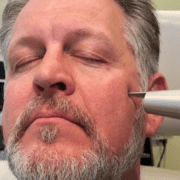


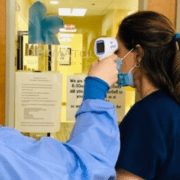
 Updated Appointment Protocols
Updated Appointment Protocols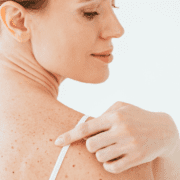

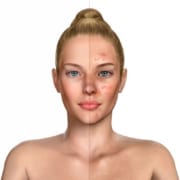

 Create and follow a daily routine
Create and follow a daily routine